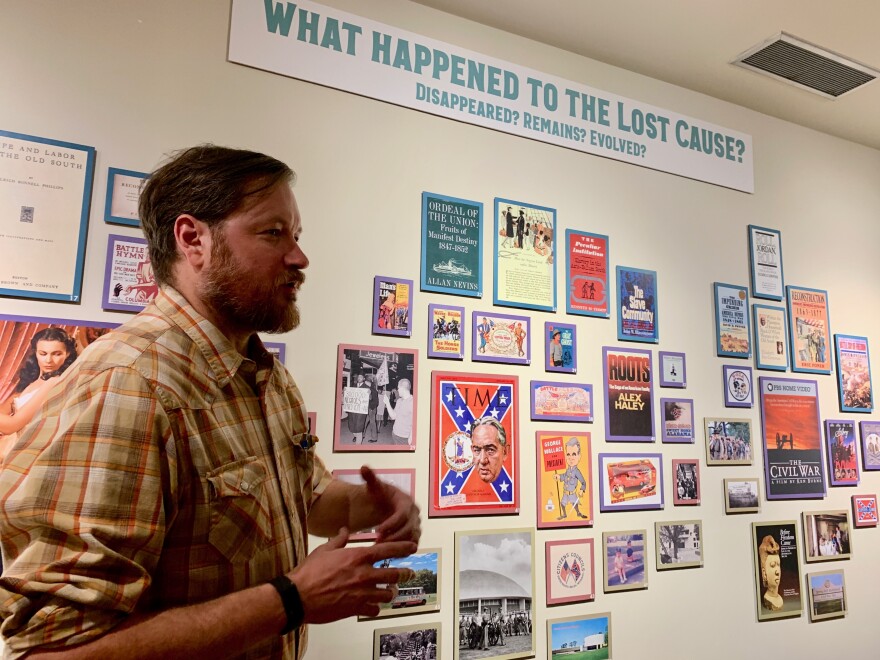In downtown Richmond, tucked amidst the sprawling VCU hospital, is a mansion built in the early 1800’s. The building was once the White House of the Confederacy.
Today it’s a museum, and a new exhibit in the space explores The Lost Cause.
The new exhibit is in the basement of the White House of the Confederacy. It’s a building with a long history. Home to Jefferson Davis, then headquarters for Union forces after the War.
Beginning in the 1890’s the city gave the building to the women of the Confederate Literary Memorial Society. For a century, they used the space as a shrine.
Then, in the 1970’s a slow transition began - from shrine to museum. Stephanie Arduini is with the American Civil War Museum. They’ve operated the space since 2013.
“It really is a place where you can explore the Civil War in microcosm,” Arduini said during a recent press preview of the new exhibit.
Arduini adds that part their goal with the new exhibit is to help reach people whose lives were shaped by the Lost Cause.
“If your grandfather or a beloved teacher taught you a story that was shaped by the Lost Cause, intentionally or not, and now suddenly you’re finding out that that’s not the case…. that’s a scary thing,” Arduini said.

The exhibit and White House of the Confederacy, along with its sister site at the American Civil War Museum, aims to help people rebuild their framework. And that work is needed.
A PEW study from 2011 found that 48-percent of Americans still believe the Civil War was about state’s rights, despite broad consensus from historians to the contrary.
That misunderstanding is, in large part, because of the Lost Cause.
“Former Confederates shaped a narrative of the Civil War and their experiences and even though they lost the war in many ways they won -- because they shaped the narrative,” explained Arduini.
That narrative is rooted in racial superiority. It argues the Civil War wasn’t about slavery, that Confederate soldiers were saintly, and that Emancipation was a mistake.
“That is not an accurate reading of history, and our understanding of the past is so much broader,” said curator Chris Graham. “Including the fact that understanding the Lost Cause is not just a set of claims about the past but an aspiration for the present and the future.”
In other words the Lost Cause not only propagated false history, it also laid the groundwork for the racial violence and suppression that dominated the American South in the early 20th century.
Under the Lost Cause narrative, the Ku Klux Klan are the good guys and society is better off when black people and white people lead separate lives.
“It’s very focused on a, frankly, a specifically kind of white male story that

traditionally there hasn’t been place for other people in that story,” said Graham.
One part of the new Lost Cause exhibit prompts visitors with a question: What shapes your understanding of the Civil War? Is it Gone with the Wind? Maybe what you learned in school?
A wall is strewn with images of popular and historical culture. Including an image from a Virginia textbook that romanticizes the experiences of enslaved individuals.
The textbook was taught in some public schools until the 1970’s, and possible into the early 1980’s.
“So there’s many people, perhaps even my own age, who encountered and were kind of taught this as a true history of race relations,” said Graham.
The American Civil War Museum runs regular tours of the White House of the Confederacy. Beginning December 14th, visitors can also tack on a visit to the Lost Cause exhibit.
This report, provided by Virginia Public Radio, was made possible with support from the Virginia Education Association.




